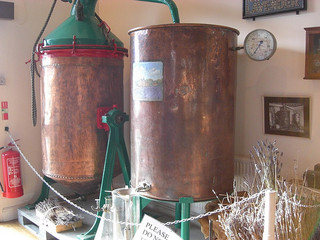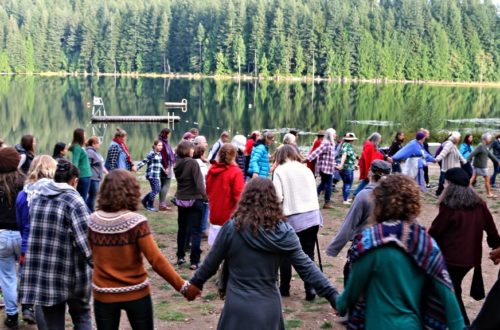Portland and Vancouver have a radon issue–
one that has been here for thousands of years–and it is not going to go away. The soil in the Willamette Valley, much of Clark County, and the Columbia River Gorge has a granite component, Ice Age material brought down the Columbia River from Montana repeatedly between 10,000 and 12,000 years ago, during the Missoula Floods. It is found as sand, gravel, cobblestones, even boulders. This granite, mixed into the upper layers of our soil, contains uranium, which breaks down naturally over time and produces radon gas.
Invisible and with no smell, radon is drawn upward into our homes (regardless of architectural style, age, or foundation type) by the relatively lower pressure found in the structure above (think of the house acting like a big chimney). The only way to know you have a significant issue is to test your home, which may be accomplished with an inexpensive, easy-to-use kit purchased at your local hardware store. Some houses will test low, others moderate, while still others will be quite high.
So why all the fuss?
Almost 40 years ago, medical research began to connect long-term exposure to high levels of radon with the development of lung cancer. Today, the American Lung Association, American Medical Association, Office of the Surgeon General, Environmental Protection Agency, and World Health Organization have each acknowledged the risk which radon poses. An estimated 22,000 fatalities are attributed annually to long-term radon exposure in the United States alone. Radon is now the second leading cause of lung cancer, behind only cigarette smoking, and is the leading cause of lung cancer for non-smokers.
What can be done about this? First and foremost, testing your house is a simple process. For under $30, a short-term test (from 2-5 days in length) can be performed, including shipping, laboratory analysis, and reporting. Based upon the report, a homeowner can then make an informed decision whether to seek out a certified mitigation firm. Each state maintains a list of currently certified companies; in Oregon, contact the Public Health Division’s Radon Program at 971-673-0440, or visit public.health.oregon.gov
 Mitigation involves installing a system to counteract the house’s upward influence on radon. No one can stop the soil under a home from naturally producing this gas, but what can be changed is the path radon follows. A depressurization system will “hold” the gas beneath the house, draw it to a collection point (typically a small well excavated beneath the basement slab or within a crawlspace), then vent it to the exterior of the house and to above the roofline (so it can’t re-enter the home through a nearby open window). Post-installation testing will confirm the system has successfully lowered the radon levels in the home.
Mitigation involves installing a system to counteract the house’s upward influence on radon. No one can stop the soil under a home from naturally producing this gas, but what can be changed is the path radon follows. A depressurization system will “hold” the gas beneath the house, draw it to a collection point (typically a small well excavated beneath the basement slab or within a crawlspace), then vent it to the exterior of the house and to above the roofline (so it can’t re-enter the home through a nearby open window). Post-installation testing will confirm the system has successfully lowered the radon levels in the home.
For most single family homes, such a system will cost between $1,500 and $2,000. It is a permanent, year-round solution, and EPA’s preferred approach to the problem (as opposed to merely ventilating the home by keeping windows cracked open, or placing a fan in the basement).
For many homeowners, they only learn about radon when they put their house up for sale. A growing number of home inspectors are including radon testing as part of their services, and local real estate agents–increasingly aware of radon–are frequently encouraging buyers to have homes tested. In many cases, a high test (above the EPA Action Level of 4.0 picocuries, a measurement of radiation) will spur a buyer to insist the seller mitigate the house prior to the close of escrow.
Radon. It’s a problem in White Salmon, Vancouver, Portland, Salem, Corvallis, and all points between. Not all homes will test high, or be at moderate levels. Any given house can test low, even when the neighbor across the street tested their home and found it to be moderate or high. The accumulation of Missoula Flood granite in a neighborhood can vary tremendously, even from one parcel to the next. It’s a bit like “geologic roulette,” which is why testing is so critical. Both EPA and the Surgeon General’s Office recommend every American home be tested for radon, regardless of location. Test your home, protect your family, safeguard your health.
Jim Bittner is a Nationally Certified, Residential, Radon Measurement and Mitigation Provider for Cascade Radon, Inc.
For more information cascaderadon.com






